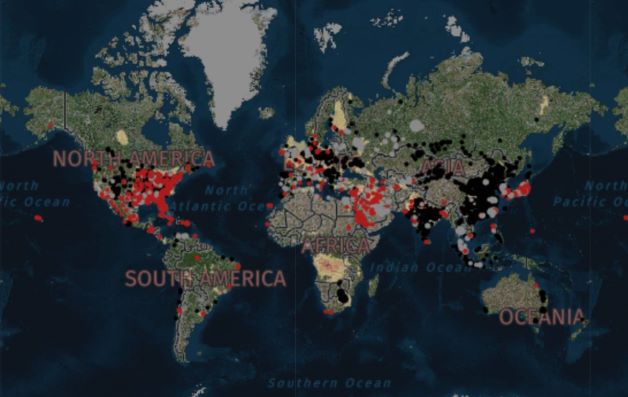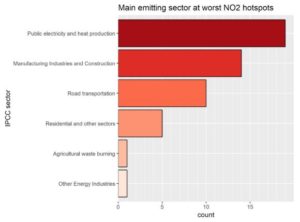South Africa Tops List in Greenpeace’s NO2 Pollution Hotspots Map
Greenpeace reveals world's top NO2 hotspots across six continents with its groundbreaking analysis of new satellite data from 1 June to 31 August this year
 World's Biggest NO2 Emissions Hotspots Revealed by Greenpeace
World's Biggest NO2 Emissions Hotspots Revealed by Greenpeace
Greenpeace has revealed the world’s largest nitrogen dioxide hotspots across the six continents. Surprisingly, results shows Mpumalanga in South Africa became the biggest NO2 hotspot surpassing China, India and the US.
The green province which forms the home to southern Kruger national park is also a den to a dozen Coal power plants owned and operated by Eskom Power utility with a total capacity of over 32 gigawatts.
Data analysis of new satellite data from 1 June to 31 August this year reveals the world’s largest NO2 air pollution hotspots across six continents in the most detail to date, and points the finger at coal and transport as the two principal sources of emissions.

NO2 is a dangerous pollutant in itself and also contributes to the formation of PM2.5 and ozone, two of the most dangerous forms of air pollution. The air pollutant causes asthma and lung cancer.
The list of the largest NO2 hotspots in the world from 1 June to 31 August this year includes well known coal-fired power plants in South Africa, Germany and India, and numerous coal-burning industrial clusters in China.
The largest number of hotspots, a total of 10, is found in China, eight in the Arab world, four in the EU and three each in India, the US and the DR Congo, according to this analysis.
Delhi-NCR, Sonbhadra in Uttar Pradesh and Singrauli in Madhya Pradesh and Talcher-Angul in Odisha are the identified hotspots in India. Sonbhadra and Singrauli are considered as part of a single hotspot. Ramagundam in Telangana has a Red Spot because of the highest level of NO2 thickness measured in Dobson units because of thermal plants
“Air pollution is a global health crisis, with up to 95% of the world breathing unsafe air. With hotspots across six continents, ranging from cities to industrial clusters to agricultural areas, this new analysis shows us more clearly than ever before just how big a part of the picture NO2 pollution is,” said Lauri Myllyvirta, Greenpeace Nordic air pollution campaigner.
Cities such as Santiago de Chile, London, Dubai and Tehran also feature prominently in the list of 50 NO2 hotspots due to transport-related emissions. A recent study by WHO also has put the grave dangers children face due to air pollution. A staggering 90% breathe toxic air daily. Out of this 600,000 children die from acute lower respiratory infections caused by dirty air and 93% are exposed to one of the most damaging pollutants – PM2.5. In the EU alone, cleaning up NO2 pollution could save up to 75,000 lives per year.
Greenpeace and WHO both urge governments to do something and quickly. It seeks to rapidly move their energy systems away from reliance on coal and toward renewable technologies. For those regions and cities whose primary source of air pollution is transportation, comprehensive plans to move away from combustion engine vehicles, particularly diesel, to electric powered public transport systems will help to provide clean air for all city residents.




